- Home
- Missions
- Data
- Communications
- People
- The Earth Observer Newsletter
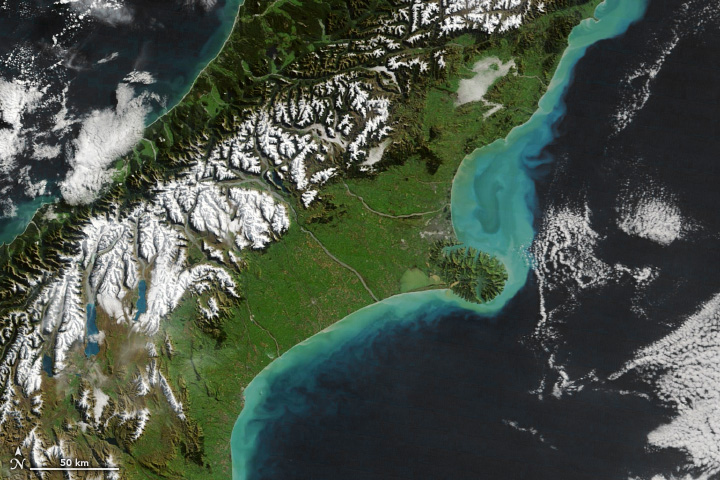
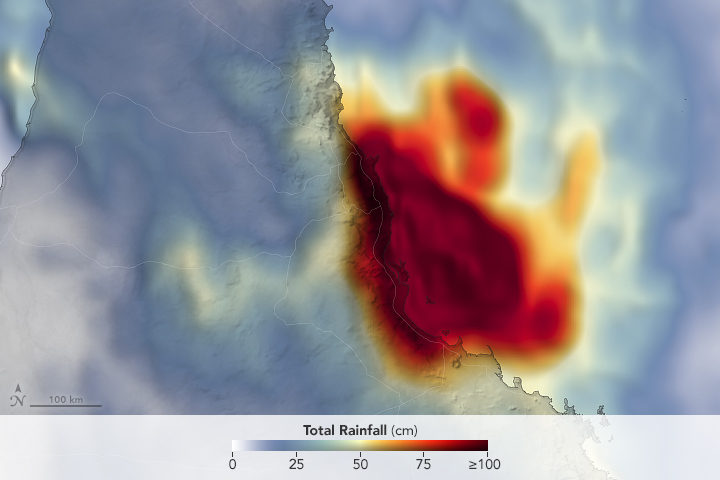
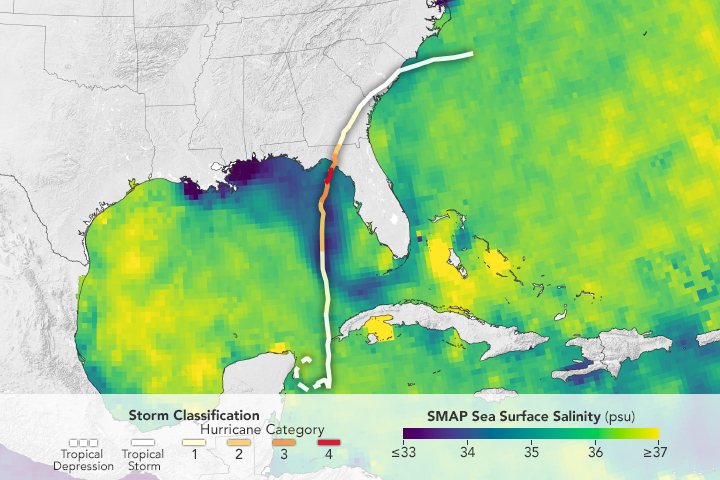
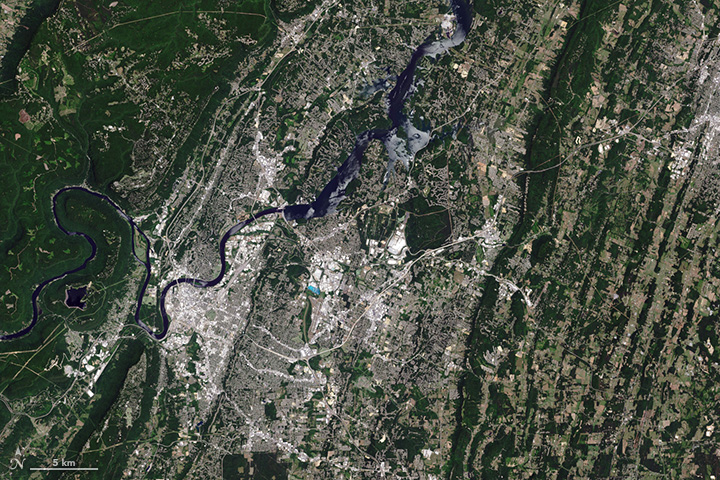
Recent Imagery
You will be directed to the NASA Visible Earth webpage when you select Images by Mission below, or click on the images at right that are randomly generated to represent four out of all possible topics.
Featured Content
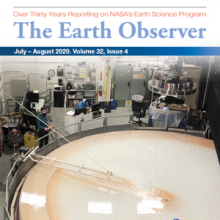 |
2020 Sun–Climate SymposiumObservations of the Sun and Earth from space have revolutionized our view and understanding of how solar variability and other natural and anthropogenic forcings impact Earth’s atmosphere and climate. For more than four decades, the total and spectral solar irradiance and global terrestrial atmosphere and surface have been observed continuously, providing an unprecedented, high-quality time series of data for Sun–climate studies. To learn more, see page 4 of the July-August issue of The Earth Observer. |
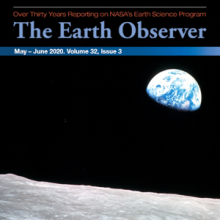 |
Earth Day at Home with NASAEarth Day celebrated its fiftieth anniversary during an unprecedented time in history as the human race fights back against the global spread of a new, or novel, coronavirus—COVID-19. With Earth Day on the horizon and many NASA personnel continuing to do their jobs remotely, the agency had to think quickly about how to participate in the usual Earth Day celebrations around the globe. In the May-June 2020 issue of The Earth Observer, learn how NASA made the decision to shift its celebration from its traditional in-person event with a variety of hands-on activities to engage the public, to one that could be carried out online, encouraging its web and social media followers to collectively appreciate the wondrous beauty of our planet and the extraordinary science that helps us understand how it all works— from the safety of home. |
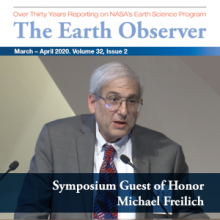 |
Symposium on Earth Science and Applications from Space with Special Guest Michael FreilichIn January 2020, a Symposium on Earth Science and Applications from Space with Special Guest Michael Freilich took place at the National Academy of Sciences in Washington, DC. The event was organized to pay tribute to the career of Michael Freilich who was director of the Earth Science Division at NASA HQ from 2006–2019, capping off a long and distinguished career in ocean research that spanned nearly 40 years. During his career, Freilich was also a mentor for many other scientists and scientific leaders, many of whom attended the Symposium. We are delighted to refer you to the lead article in the March-April issue of The Earth Observer that provides a detailed summary of the symposium. |
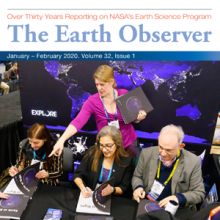 |
The Earth Observer: Moving Into 2020The January-February issue of The Earth Observer features NASA’s Land, Atmosphere Near real-time Capability for EOS (LANCE) program, which celebrated its tenth anniversary in 2019; NASA's Earth to Sky Partnership with the U.S. National Park Service; and NASA's exhibit at the Fall Meeting of the American Geophysical Union (AGU), held December 9-13 in San Francisco, CA—which was AGU’s Centennial meeting. |
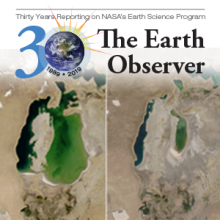 |
Celebrating 20 Years of NASA’s Earth ObservatoryWhen the virtual doors of NASA’s Earth Observatory website first opened to the public in April 1999, who could have imagined the world that exists today? When the team published their first content, it is likely they had no idea that 20 years later the site would still be publishing—nor how different the world would be in just two decades. Turn to page 4 of the November-December 2019 issue of The Earth Observer to read about EO’s twenty years of communicating NASA Earth Science. |
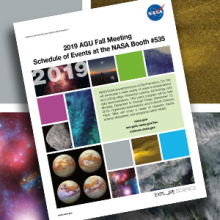 |
2019 AGU Schedule of Events at the NASA BoothNASA Science welcomes you to San Francisco, CA. We will showcase a wide variety of science presentations and cutting-edge, interactive science, technology, and data demonstrations. This year’s program will be held Monday, December 9, through Friday, December 13, 2019. Hyperwall presentations and In-Booth Science Flash Talks will cover a range of research topics, science disciplines, and programs within NASA. |
 |
NASA's Science Support Office 2019 Annual ReportThe Science Support Office (SSO) supported 17 domestic and international science conferences and 3 public events in 2019. The SSO continues to provide an inspiring and interactive venue for every event during the year, using a unique storytelling approach that allows a variety of audiences worldwide to connect with NASA Science. The 2019 Annual Report provides an overview of these activities with details about new publications, displays, Hyperwall stories, social media, and more! |
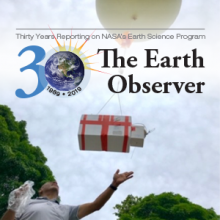 |
SHADOZ at 20 Years: Achievements of a Strategic Ozonesonde NetworkTwenty years ago, The Earth Observer published an article announcing the start of the Southern Hemisphere ADditional OZonesondes (SHADOZ) project. It began as a two-year initiative to collect measurements of ozone throughout the atmosphere, or ozone profiles, using balloon-borne ozonesondes by coordinating regular launches at 10 stations in the tropics and subtropics. The network reached its 20-year milestone in 2018, thus providing a fitting opportunity to reflect on its scientific contributions. An article in the September-October 2019 issue of The Earth Observer begins with some history and background on SHADOZ, including details on the network and the ozonesonde instrument itself. It then discusses several spinoffs and major scientific and technological advances resulting from SHADOZ. |
 |
The Living Legacy of Landsat 7: Still Going Strong after 20 Years in OrbitThe twentieth anniversary of the launch of Landsat 7 on April 15, 1999, is an opportune time to retrace the history leading to modern Earth science data acquisition and use. This article in the July-August 2019 issue of The Earth Observer provides a retrospective, with some insight into why Landsat 7 was a key player in Earth science and related technical endeavors, and how its mission has informed Earth system science to this day. It discusses some of the scientific and technology bases for the Landsat program generally and Landsat 7 specifically, and points out ways in which Landsat 7 crossed organizational boundaries to ensure the best scientific return. |
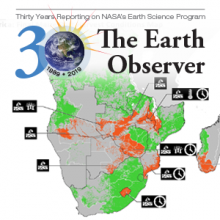 |
Increasing Information Access for Food Security MonitoringOver 10% of the global population is undernourished. Of this population, the majority are in developing countries where the situation is only worsening. Timely and reliable information on crop conditions and early warning of impending shortfalls of crop production are critical to achieving food security and ensuring sufficient, reliable food availability and access. In the May-June issue of The Earth Observer, learn how satellite-based Earth observations significantly contribute towards providing crucial crop information, allowing decision makers to track crop development and general condition throughout the growing season, and ultimately supporting decision-making processes related to early disaster response and mitigation measures that reduce food insecurity. |
